#lessons of history
Explore tagged Tumblr posts
Text
"In order to maintain a tolerant society, the society must be intolerant of intolerance." This is the so-called tolerance paradox of the philosopher Karl Popper. In other words, when a tolerant society tolerates intolerant worldviews, that is not just the end of tolerance. Ultimately it's the end of this society...
#thought of the day#tought of today#karl popper#tolerance#intolerance#totalitarianism#paradox#the paradox of tolerance#society#common sense#social contract#lessons of history#life lessons#think about it#what matters#the time is now
163 notes
·
View notes
Text
What day is it today?
This time change really has me messed up. What day is it today? Anway, just found these two unrelated pictures I wanted to share.


2 notes
·
View notes
Text
1963 Refrigerator 🤔
#pay attention#educate yourselves#educate yourself#knowledge is power#reeducate yourself#reeducate yourselves#think about it#think for yourselves#think for yourself#do your homework#do some research#do your own research#ask yourself questions#question everything#american history#history lesson
75K notes
·
View notes
Text
In 1850, a farmer found a secret village. It was later determined to be older than the Great Pyramids of Egypt. Archeologists estimated that 100 people lived in this village named Skara Brae, the "Scottish Pompeii." The houses were connected to each other by tunnels, and each house could be closed off with a stone door.

20K notes
·
View notes
Text
What does life in North Korea look like outside of Pyongyang? 🇰🇵
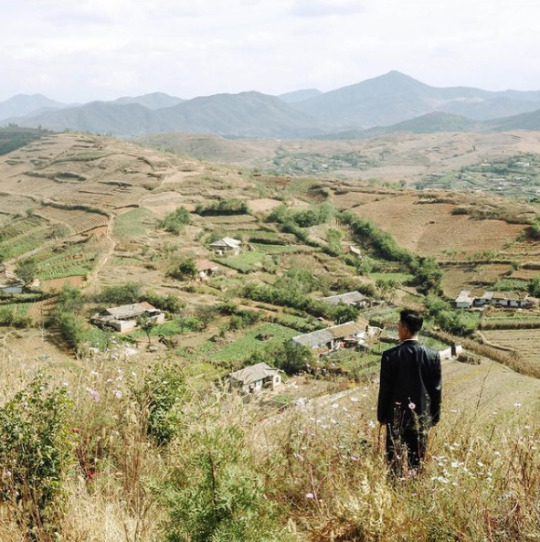
Hey, I'm back again with a very scary "tankie" post that asks you to think of North Koreans as people, and to consider their country not as a cartoonish dystopia, but as a nation that, like any other place on earth, has culture, traditions, and history.
Below is a collection of pictures from various cities and places in North Korea, along with a brief dive into some of the historical events that informs life in the so-called "hermit kingdom."
Warning: very long post
Kaesong, the historic city
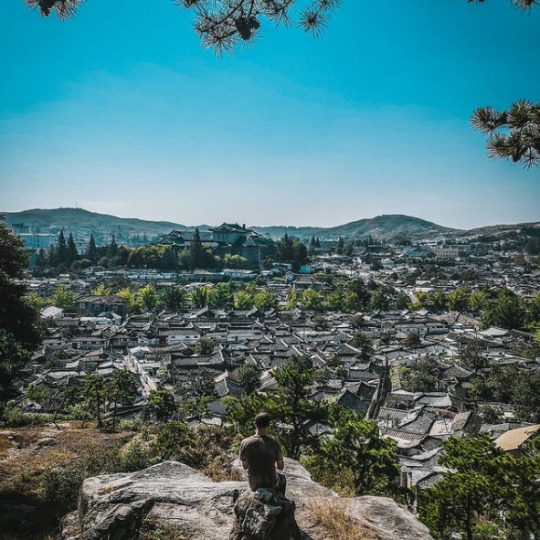
Beginning this post with Kaesong, one of the oldest cities in Korea. It's also one of the few major cities in the DPRK (i.e. "North Korea") that was not completely destroyed during the Korean war.
Every single city you'll see from this point on were victims of intense aerial bombardments from the U.S. and its allies, and had to be either partially or completely rebuilt after the war.
From 1951 to 1953, during what has now become known as the "forgotten war" in the West, the U.S. dropped 635,000 tons of bombs over Korea — most of it in the North, and on civilian population centers. An additional 32,000 tons of napalm was also deployed, engulfing whole cities in fire and inflicting people with horrific burns:
For such a simple thing to make, napalm had horrific human consequences. A bit of liquid fire, a sort of jellied gasoline, napalm clung to human skin on contact and melted off the flesh. Witnesses to napalm's impact described eyelids so burned they could not be shut and flesh that looked like "swollen, raw meat." - PBS
Ever wondered why North Koreans seem to hate the U.S so much? Well...
Keep in mind that only a few years prior to this, the U.S. had, as the first and only country in the world, used the atomic bomb as a weapon of war. Consider, too, the proximity between Japan and Korea — both geographically and as an "Other" in the Western imagination.
As the war dragged on, and it became clear the U.S. and its allies would not "win" in any conventional sense, the fear that the U.S. would resort to nuclear weapons again loomed large, adding another frightening dimension to the war that can probably go a long way in explaining the DPRK's later obsession with acquiring their own nuclear bomb.
But even without the use of nuclear weapons, the indiscriminate attack on civilians, particularly from U.S. saturation bombings, was still horrific:
"The number of Korean dead, injured or missing by war’s end approached three million, ten percent of the overall population. The majority of those killed were in the North, which had half of the population of the South; although the DPRK does not have official figures, possibly twelve to fifteen percent of the population was killed in the war, a figure close to or surpassing the proportion of Soviet citizens killed in World War II" - Charles K. Armstrong
On top of the loss of life, there's also the material damage. By the end of the war, the U.S. Air Force had, by its own estimations, destroyed somewhere around 85% of all buildings in the DPRK, leaving most cities in complete ruin. There are even stories of U.S. bombers dropping their loads into the ocean because they couldn't find any visible targets to bomb.
What you'll see below of Kaesong, then, provides both a rare glimpse of what life in North Korea looked like before the war, and a reminder of what was destroyed.
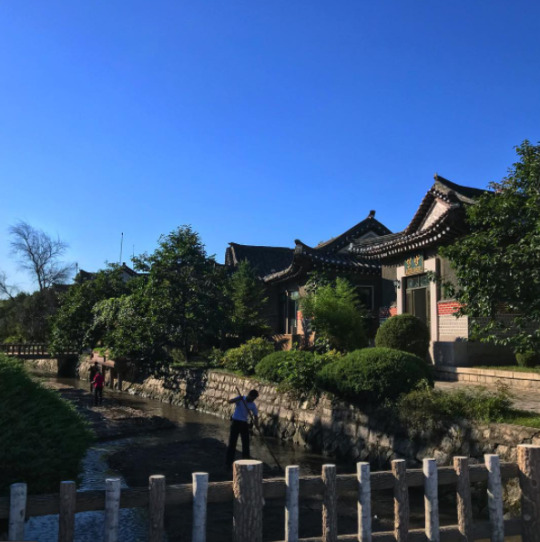
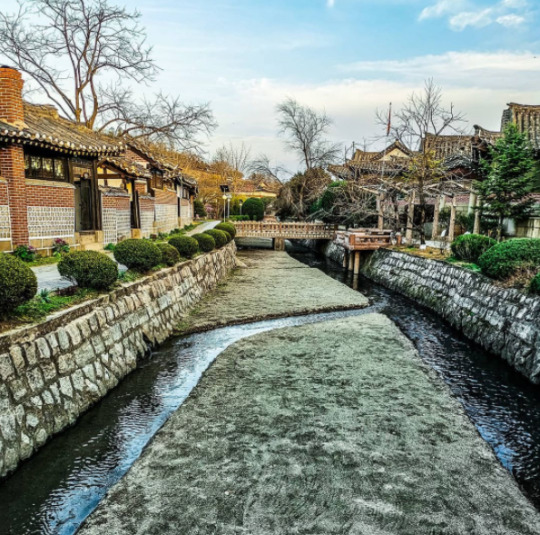
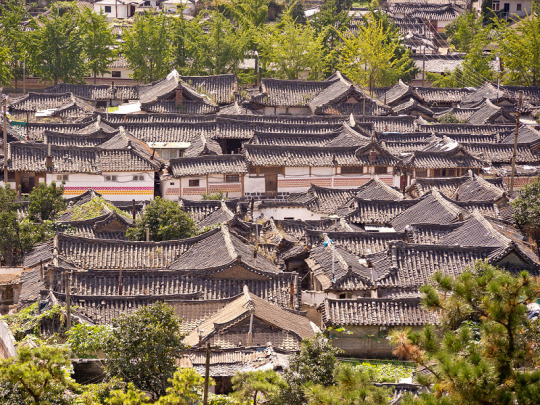
Kaesong's main street, pictured below.
Due the stifling sanctions imposed on the DPRK—which has, in various forms and intensities, been in effect since the 1950s—car ownership is still low throughout the country, with most people getting around either by walking or biking, or by bus or train for longer distances.
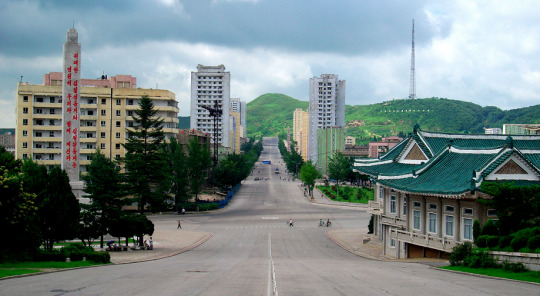
Kaesong, which is regarded as an educational center, is also notable for its many Koryŏ-era monuments. A group of twelve such sites were granted UNESCO world heritage status in 2013.
Included is the Hyonjongnung Royal Tomb, a 14th-century mausoleum located just outside the city of Kaesong.
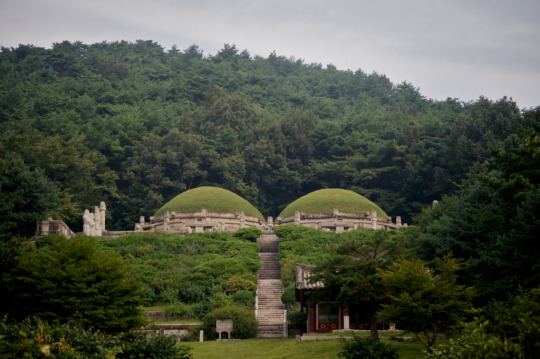
One of the statues guarding the tomb.
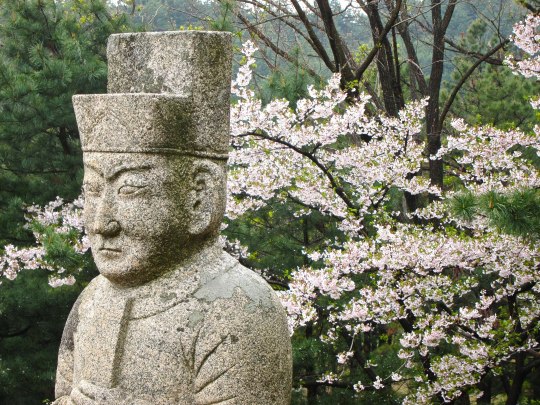
Before moving on the other cities, I also wanted to showcase one more of the DPRK's historical sites: Pohyonsa, a thousand-year-old Buddhist temple complex located in the Myohyang Mountains.
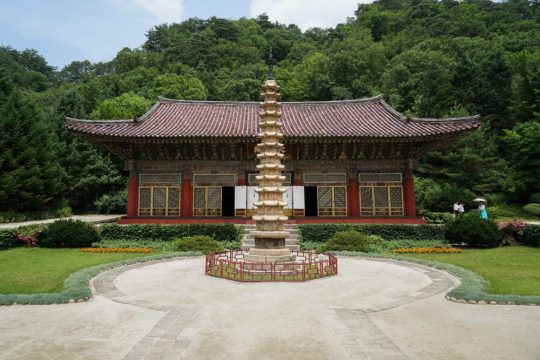
Like many of DPRK's historic sites, the temple complex suffered extensive damage during the Korean war, with the U.S. led bombings destroying over half of its 24 pre-war buildings.
The complex has since been restored and is in use today both as a residence for Buddhist monks, and as a historic site open to visitors.
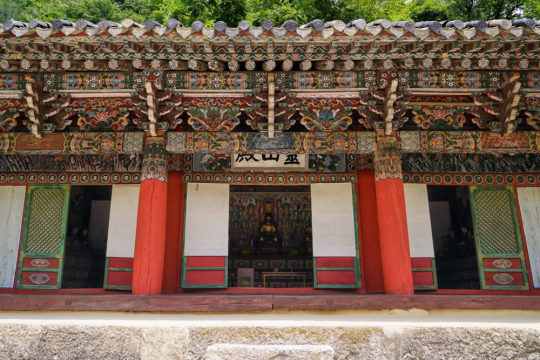
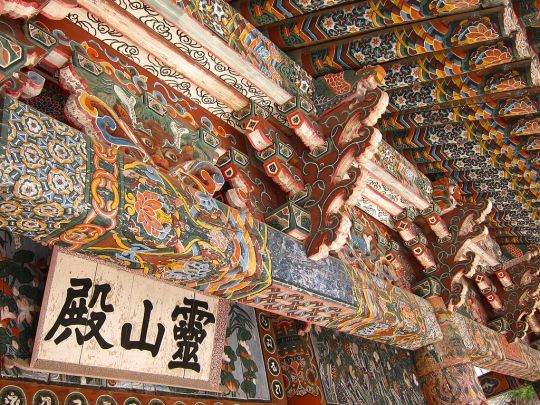
Hamhung, the second largest city in the DPRK.
A coastal city located in the South Hamgyŏng Province. It has long served as a major industrial hub in the DPRK, and has one of the largest and busiest ports in the country.
Hamhung, like most of the coastal cities in the DPRK, was hit particularly hard during the war. Through relentless aerial bombardments, the US and its allies destroyed somewhere around 80-90% percent of all buildings, roads, and other infrastructure in the city.
Now, more than seventy years later, unexploded bombs, mortars and pieces of live ammunition are still being unearthed by the thousands in the area. As recently as 2016, one of North Korea's bomb squads—there's one in every province, faced with the same cleanup task—retrieved 370 unexploded mortar rounds... from an elementary school playground.
Experts in the DPRK estimate it will probably take over a hundred years to clean up all the unexploded ordnance—and that's just in and around Hamhung.
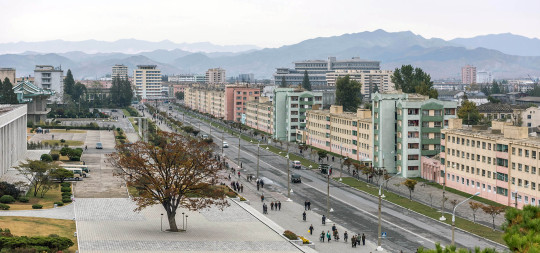
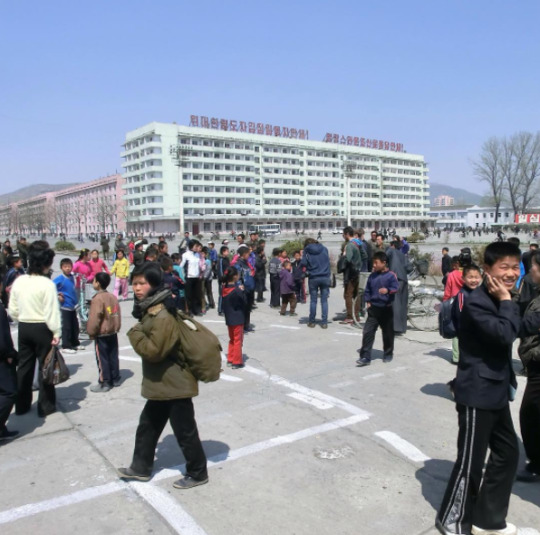

Hamhung's fertilizer plant, the biggest in North Korea.
When the war broke out, Hamhung was home to the largest nitrogen fertilizer plant in Asia. Since its product could be used in the creation of explosives, the existence of the plant is considered to have made Hamhung a target for U.S. aggression (though it's worth repeating that the U.S. carried out saturation bombings of most population centers in the country, irrespective of any so-called 'military value').
The plant was immediately rebuilt after the war, and—beyond its practical use—serves now as a monument of resistance to U.S. imperialism, and as a functional and symbolic site of self-reliance.
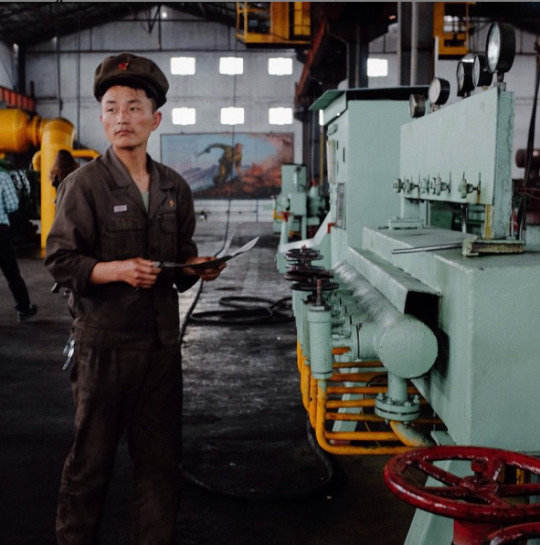
Chongjin, the third largest city in the DPRK.
Another coastal city and industrial hub. It underwent a massive development prior to the Korean war, housing around 300,000 people by the time the war broke out.
By 1953, the U.S. had destroyed most of Chongjin's industry, bombed its harbors, and killed one third of the population.
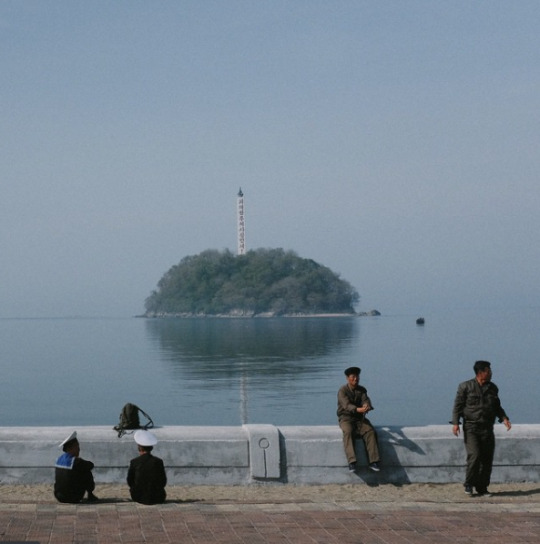
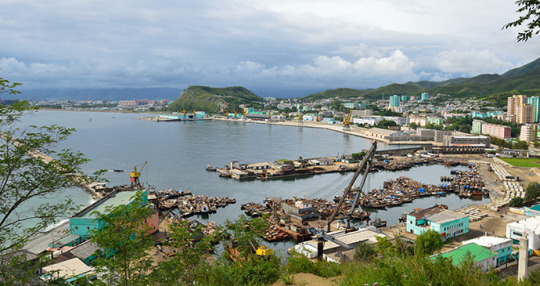
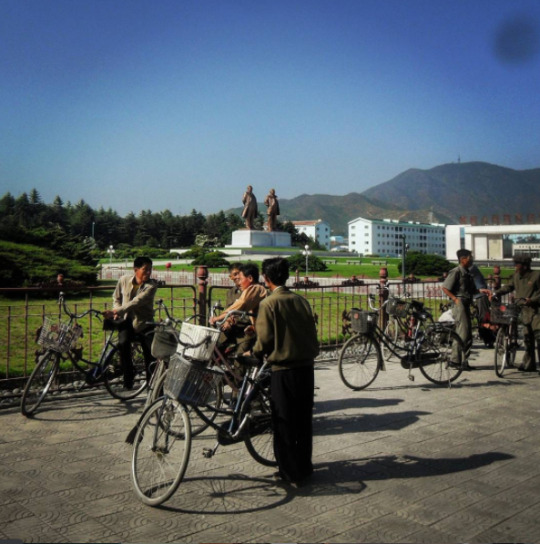
Wonsan, a rebuilt seaside city.
The city of Wonsan is a vital link between the DPRK's east and west coasts, and acts today as both a popular holiday destination for North Koreans, and as a central location for the country's growing tourism industry.
Considered a strategically important location during the war, Wonsan is notable for having endured one of the longest naval blockades in modern history, lasting a total of 861 days.
By the end of the war, the U.S. estimated that they had destroyed around 80% of the city.
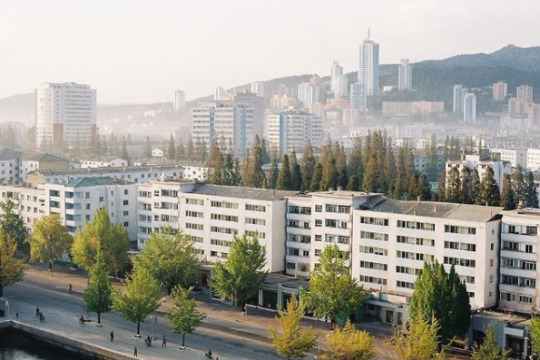
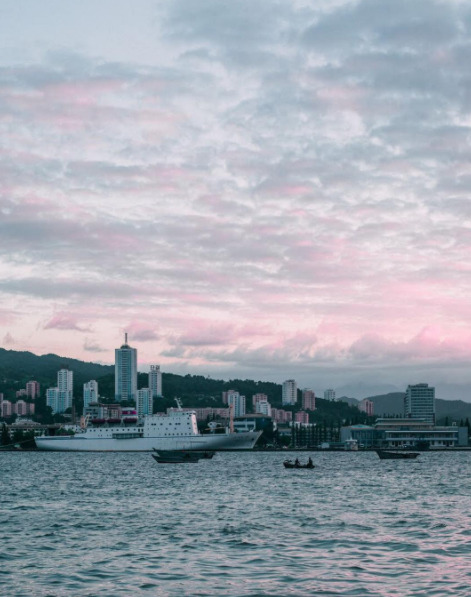
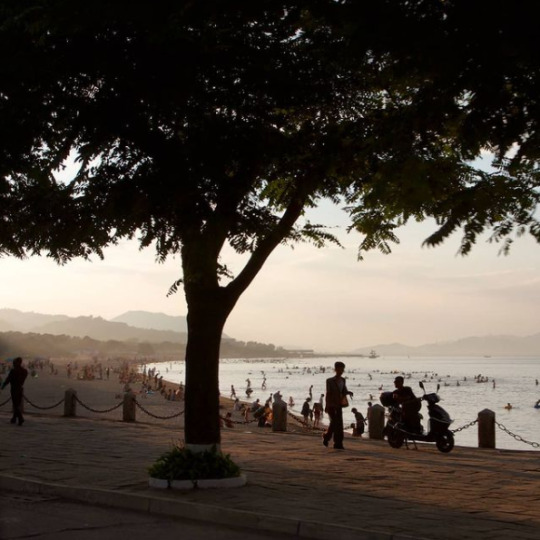
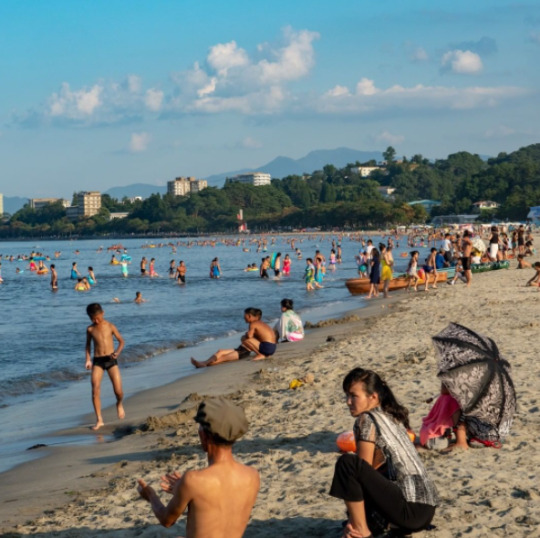
Masikryong Ski Resort, located close to Wonsan. It opened to the public in 2014 and is the first, I believe, that was built with foreign tourists in mind.
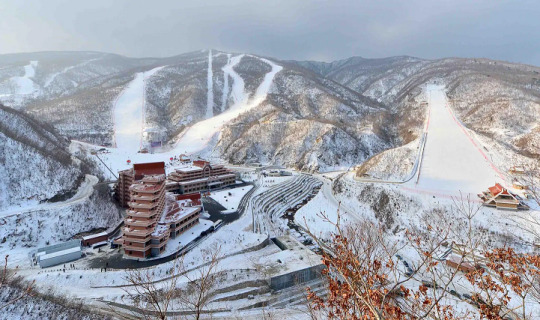
Sariwon, another rebuilt city
One of the worst hit cities during the Korean War, with an estimated destruction level of 95%.
I've written about its Wikipedia page here before, which used to mockingly describe its 'folk customs street'—a project built to preserve old Korean traditions and customs—as an "inaccurate romanticized recreation of an ancient Korean street."
No mention, of course, of the destruction caused by the US-led aerial bombings, or any historical context at all that could possibly even hint at why the preservation of old traditions might be particularly important for the city.
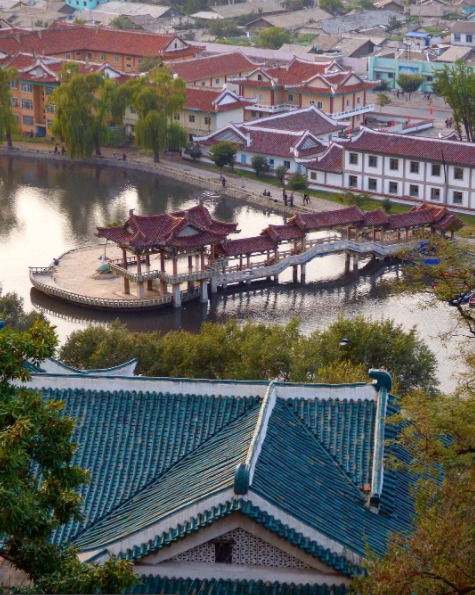
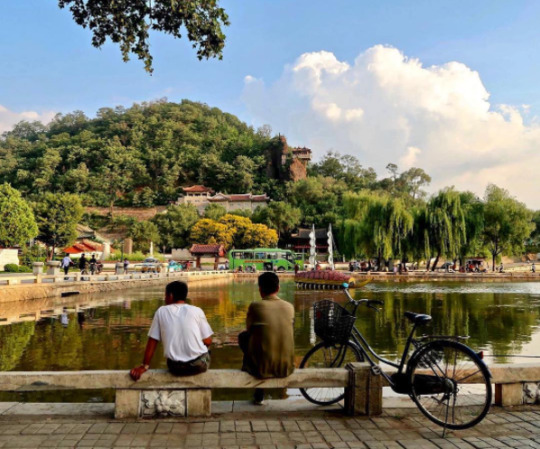

Life outside of the towns and cities
In the rural parts of the DPRK, life primarily revolves around agriculture. As the sanctions they're under make it difficult to acquire fuel, farming in the DPRK relies heavily on manual labour, which again, to avoid food shortages, requires that a large portion of the labour force resides in the countryside.
Unlike what many may think, the reliance on manual labour in farming is a relatively "new" development. Up until the crisis of the 1990s, the DPRK was a highly industrialized nation, with a modernized agricultural system and a high urbanization rate. But, as the access to cheap fuel from the USSR and China disappeared, and the sanctions placed upon them by Western nations heavily restricted their ability to import fuel from other sources, having a fuel-dependent agricultural industry became a recipe for disaster, and required an immediate and brutal restructuring.
For a more detailed breakdown of what lead to the crisis in the 90s, and how it reshaped the DPRKs approach to agriculture, check out this article by Zhun Xu.
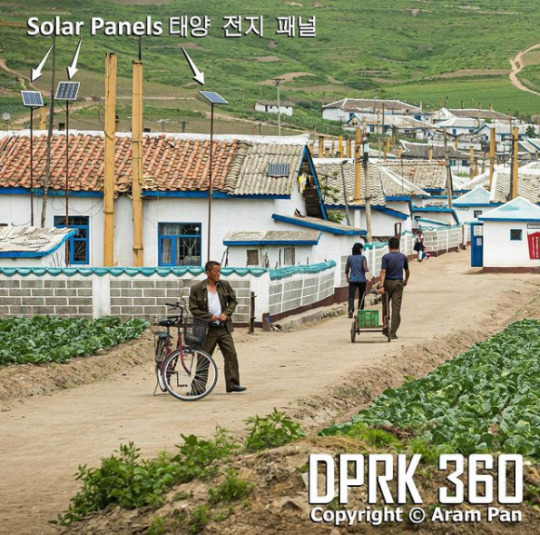
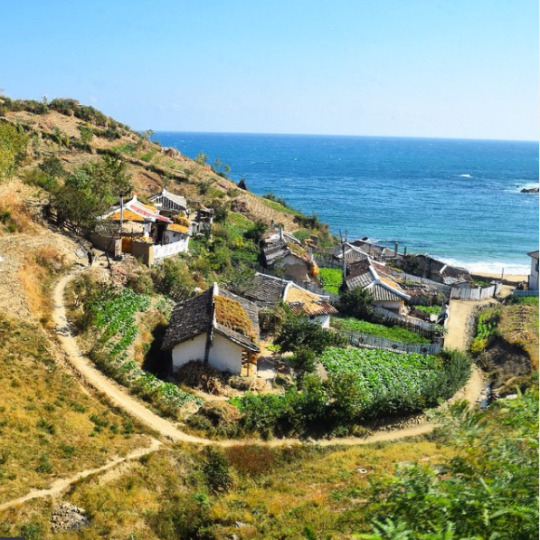
Some typical newly built rural housing, surrounded by farmland.
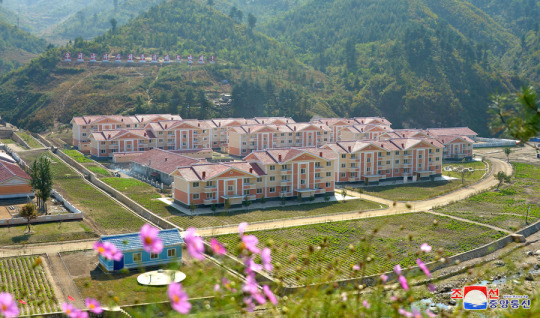
Tumblr only allows 20 pictures per post, but if you want to see more pictures of life outside Pyongyang, check out this imgur album.
#dprk#north korea#i've had this post unfinished in drafts for almost a year#also sorry about the spelling and potential formatting issues it's a nightmare to edit at this point#it was literally just meant to be a collection of picture and then the writing just sort of happened#enjoy the brief heritageposts history lesson i guess
7K notes
·
View notes
Text
“Nico Di Angelo is a token gay! His coming out scene sucked!” babes I’m BEGGING you to remember 2013 gay characters were not allowed in children’s media.
Lemme say that again: In 2013, it was expected that gay characters would be censored in children’s mass media.
Remember Korra? How she and Asami had to settle for ambiguous handholding rather than a kiss? That was fully a year after House of Hades came out. Nickelodeon said No Gays, the Children™ can’t handle that. Too risky. And people said man that stinks, but that’s how these things go in 2014 America.
Gay marriage was literally still illegal in the vast majority of US states. As of October 8th, 2013 (House of Hades release date) Gay Marriage was only a thing in thirteen fucking states. California had only legalized it that year.
Gay people were still very much on the fringes of society. It was an acceptable political position on both sides of the aisle to be against the existence and equal rights of gay people.
Nico was legitimately a landmark character in queer representation. To my knowledge, there wasn’t before an openly gay main character in a bestselling ya/middle grade fantasy fiction series. It simply was not a thing. They didn’t exist. They weren’t allowed to exist.
I remember people crying. Finally. It was a watershed moment. Kids all across the world finally got someone who represented them. It was such a big fucking deal. And it was controversial!!! Not for the reasons it is today, but because people thought gay kids having representation was inappropriate.
Is Nico’s coming out a great scene? No, these days it leaves a lot to be desired. It’s not perfect by any stretch of the imagination and I’m sure Rick wishes he could change it. But the fact that’s the case is a wonderful reflection of how far we’ve come.
All of your gay heroes in children’s media have Nico Di Angelo to thank. It was important, and good. It deserves to be celebrated, even if we’ve progressed past it since.
#history lesson#rant post#heroes of olympus#nico di angelo#pjo hoo#pjo hoo toa#percy jackson#percy jackon and the olympians#house of hades#solangelo#gay rights#gay romance#lgbt representation#queer representation#queer rep in media#pjo#will solace#heros of olympus#pjo hoo toa tsats#pjo tsats#hoo#legend of korra#korrasami#avatar korra#asami x korra#nico x will
4K notes
·
View notes
Text
Churchill: I hope I can be like napoleon
Napoleon: I hope I can be like caesar
Caesar: I hope I can be like alexander the great
Alexander the great: I hope I can be like achilles
Achilles: I hope patroclus fucks me today
#hope you all like this quick little history lesson#remember friends: the only thing a man really wants is another man. carnally.#winston churchill#napoleon bonaparte#julius caesar#alexander the great#achilles#patroclus#patrochilles#<- everything I post about comes back to them#history#tagamemnon#kind of
2K notes
·
View notes
Text

The sack of Rome, August 24th 410 CE, colourised.
Art by Psicochurroz
#196#196 migration#apartmentofawesome#r/196#/r/196#historical shitposting#art history shitposting#historyposting#HISTORY LESSON INCOMING#Rome was sacked by the Visigoths in 410 C.E.#Joseph-Noel Sylvestre#depicted this in a famous painting#The Sack of Rome by the Barbarians in 410#this artist#psicochurroz#has spoofed this artwork#replacing the big beefy barbarians with cute goth girls#hope this helped! until next time
16K notes
·
View notes
Text
Alright, Chanukah starts tonight, which means it's time for me to finally make a post about different kinds of menorahs.
This right here? This is the Temple Menorah:

There's some debate over whether the branches were straight or curved, but here's a few things we do know:
It had seven branches of equal length.
It was made of one solid piece of gold
It was at least five feet tall.
It used pure olive oil.
The Temple Menorah is what people mean when they talk about The Menorah. It's what you'll see on historical or commemorative artifacts such as the Arch of Titus in Rome or Israeli currency:
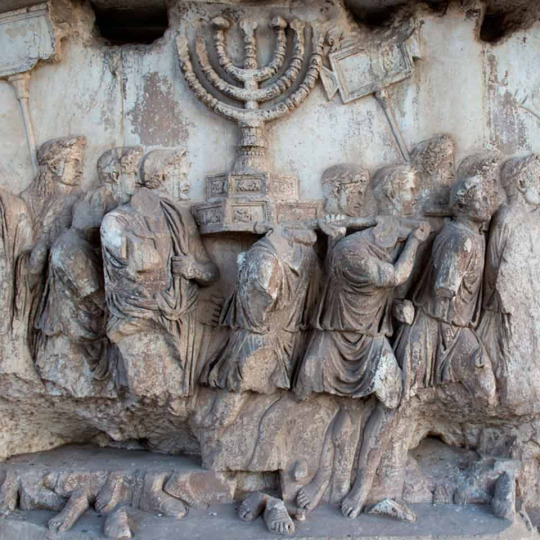
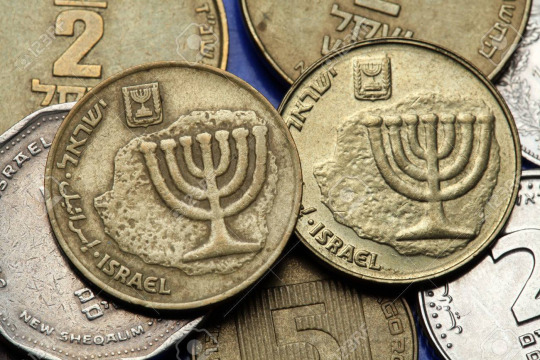
During the time when the Temple stood in Jerusalem, the High Priest lit all seven flames on this Menorah every day (using the aforementioned pure olive oil):

No one lights this on Chanukah.
This is a Chanukah menorah:

There are countless variations, but here are the important things:
It has eight branches of equal length, plus a ninth "helper" branch, known as the shamash, which is set apart from the rest of the branches and used to light the others.
It can be made of any material.
It is usually used with wax candles or oil, but, if necessary, one can use anything that burns.
In Hebrew, this kind of menorah is called a chanukiah.
Some Chanukah menorahs, like the one shown above, have the shamash in the middle. Others have it on the side:
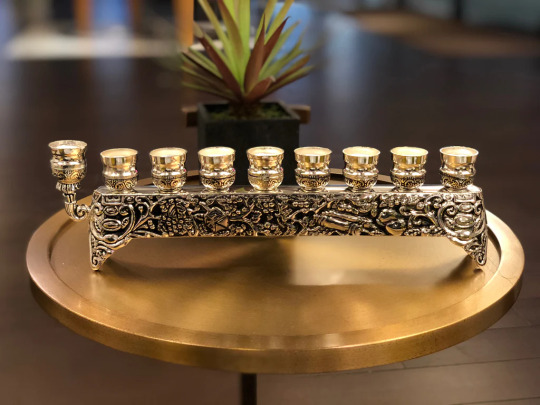
Regardless, this kind of menorah is the one that has been lit by Jews on Chanukah for thousands of years. It's the menorah you'll seen in photographs of Jewish households, including this famous picture taken in Germany in 1931:
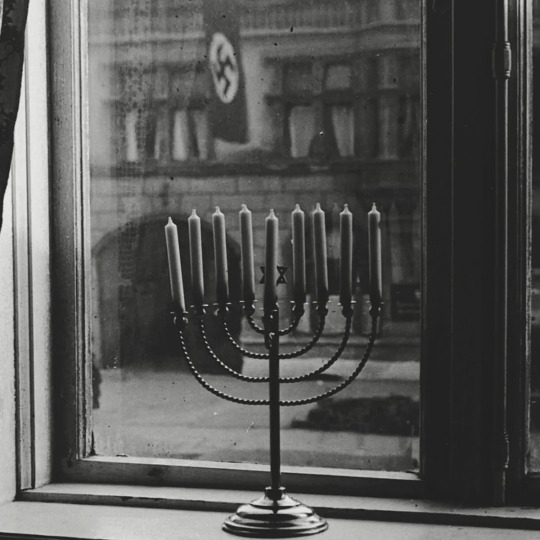
(The message written on the back of the photo reads: "Death to Judah"/ So the flag says/ "Judah will live forever"/ So the light answers)
On Chanukah, whoever is lighting the menorah will first light the shamash, then the number of candles corresponding to whichever night of Chanukah it is. The first night, only the rightmost candle is lit, the second night the two rightmost, etc. (The newest candle is always lit first):

Again, a valid Chanukah menorah has eight branches of equal length, along with a shamash. There is no such thing as a Chanukah menorah with six branches of equal length and a longer seventh branch, and no valid Chanukah menorah has eight branches of completely different lengths.
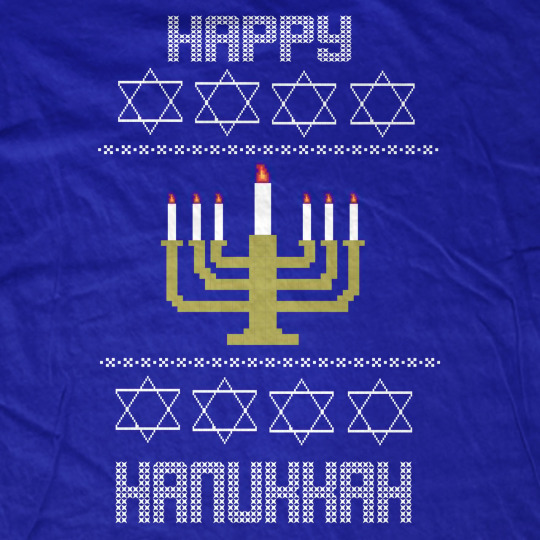

If you see either of the above designs (or anything similar) on Chanukah-themed decor, it tells you the creator has absolutely no idea what they're doing and couldn't be bothered to do more than two seconds of research to make sure their product was accurate. Anyone who knows anything about the holiday will laugh at these. (They may buy them anyway, especially if that's all that's available-- my new Chanukah sweater has an invalid menorah pattern, but it's adorable, so I'm still going to wear it. But I am also laughing about it and invite you all to do the same.)
Anyway, have a happy Chanukah, everyone!
#real life#jumblr#thoughts#menorah#chanukah#hanukkah#arch of titus#history lesson#the more you know#all queued up
7K notes
·
View notes
Text
One of the saddest lessons of history is this: If we've been bamboozled long enough, we tend to reject any evidence of the bamboozle. We're no longer interested in finding out the truth. The bamboozle has captured us. It's simply too painful to acknowledge, even to ourselves, that we've been taken. Once you give a charlatan power over you, you almost never get it back. - Carl Sagan
637 notes
·
View notes
Text








Murder, kidnappings, and corruption.
These are just some of the best known crimes of anti-communist Peruvian dictator Alberto Fujimori, who has just died. A few months ago he had claimed he would run for president again.
#peru#social justice#current events#human rights#history#history posting#history tumblr#history side of tumblr#history lesson#history lover#history trivia#important#late stage capitalism#western imperialism#political#political posting#politics#world politics#south america#free palestine#gaza#free gaza#gaza strip#palestine#gaza genocide#gazaunderattack#save gaza#venezuela#american politics#war crimes
1K notes
·
View notes
Text
Old Lighters 🤔
#pay attention#educate yourselves#educate yourself#knowledge is power#reeducate yourself#reeducate yourselves#think about it#think for yourselves#think for yourself#do your homework#do some research#do your own research#ask yourself questions#question everything#old lighters#lighters#antique#history lesson#history#american history#world history#ancient history
25K notes
·
View notes
Text
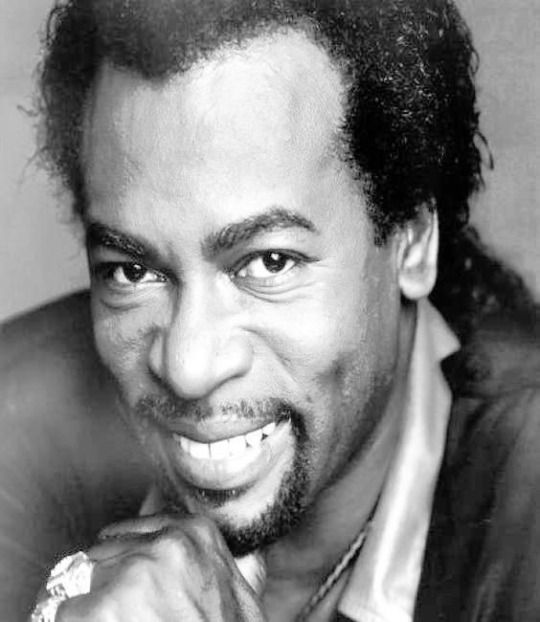
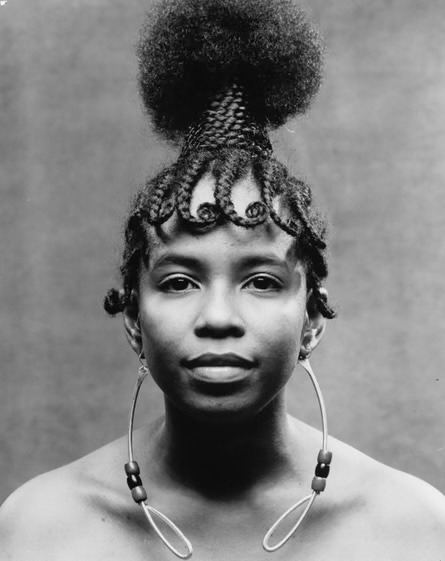
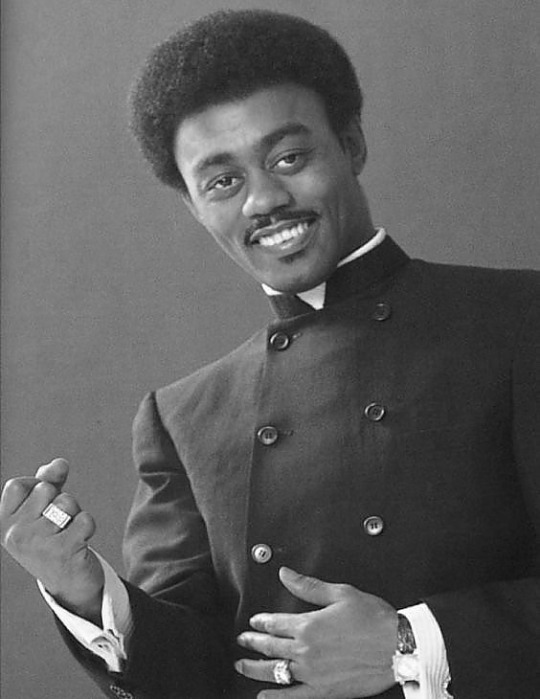
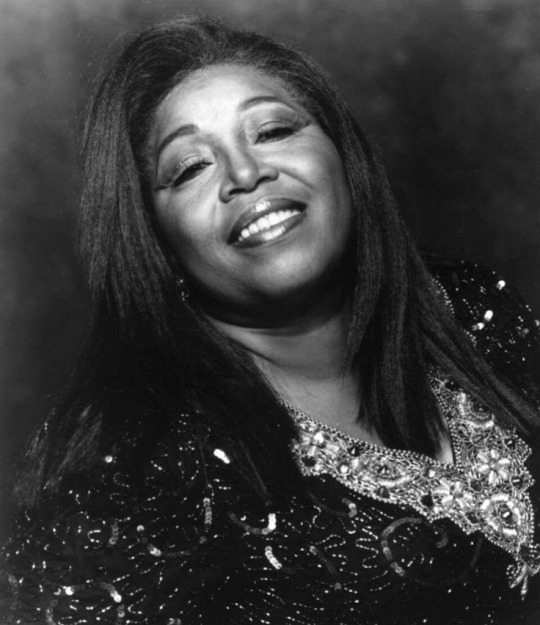
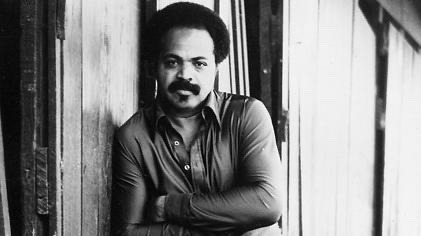
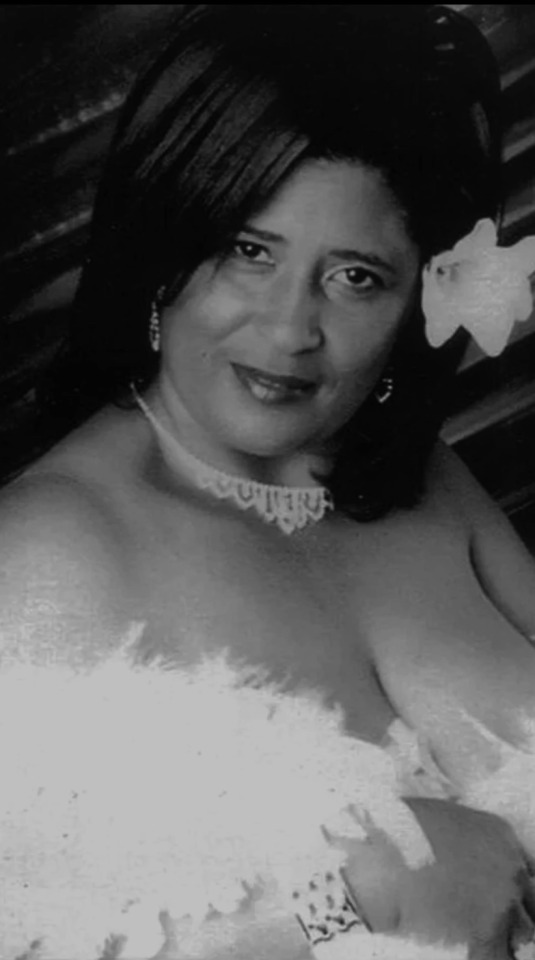
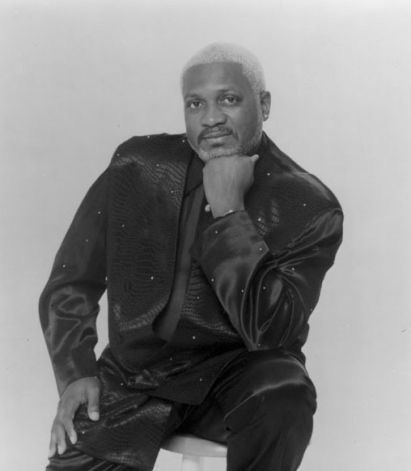
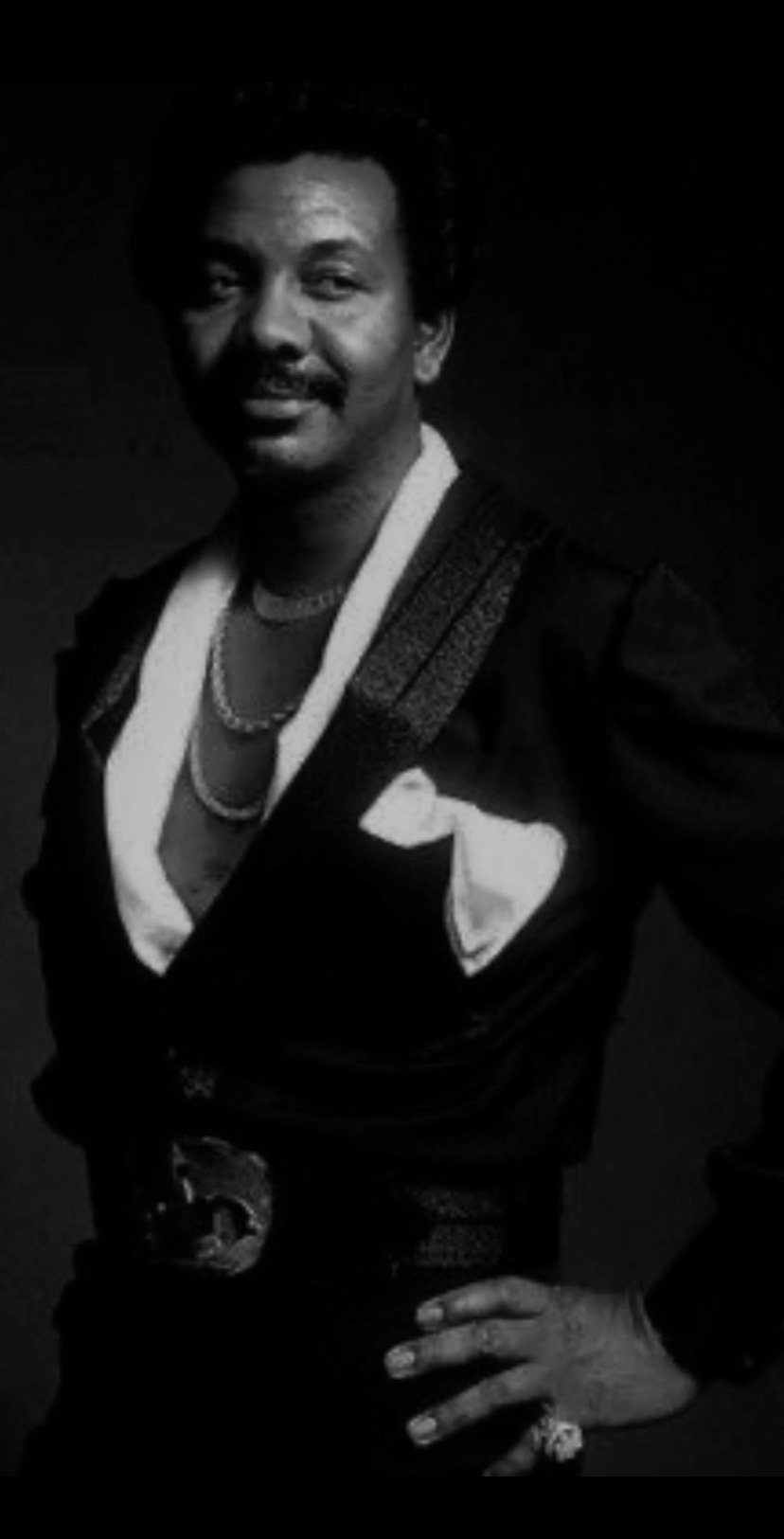
Black Southern Blues Singers
Happy Black History ✊🏿
Marvin Sease 1946-2011
Betty Wright 1953-2020
Johnnie Taylor 1934-2000
Denise Lasalle 1934-2018
Z.Z Hill 1935-1984
Ms. Jody 1957- Living
Mel Waiters 1956-2015
Tyrone Davis 1938-2005
#black blues singers#blues is black culture#black power#black excellence#black history month#black people are the blueprint#southern music#down south#down home blues#z.z hill#mel waiters#johnnie Taylor#tyrone Davis#marvin sease#betty wright#ms Jody#old school#blues music#black and proud#we are history#our story#legacy#candy licker#black men#black women rights#black women#black history#everyday is black history#black history lessons#hbcu
988 notes
·
View notes
Text
Ask an older generation of white South Africans when they first felt the bite of anti-apartheid sanctions, and some point to the moment in 1968 when their prime minister, BJ Vorster, banned a tour by the England cricket team because it included a mixed-race player, Basil D’Oliveira. After that, South Africa was excluded from international cricket until Nelson Mandela walked free from prison 22 years later. The D’Oliveira affair, as it became known, proved a watershed in drumming up popular support for the sporting boycott that eventually saw the country excluded from most international competition including rugby, the great passion of the white Afrikaners who were the base of the ruling Nationalist party and who bitterly resented being cast out. For others, the moment of reckoning came years later, in 1985 when foreign banks called in South Africa’s loans. It was a clear sign that the country’s economy was going to pay an ever higher price for apartheid. Neither of those events was decisive in bringing down South Africa’s regime. Far more credit lies with the black schoolchildren who took to the streets of Soweto in 1976 and kicked off years of unrest and civil disobedience that made the country increasingly ungovernable until changing global politics, and the collapse of communism, played its part. But the rise of the popular anti-apartheid boycott over nearly 30 years made its mark on South Africans who were increasingly confronted by a repudiation of their system. Ordinary Europeans pressured supermarkets to stop selling South African products. British students forced Barclays Bank to pull out of the apartheid state. The refusal of a Dublin shop worker to ring up a Cape grapefruit led to a strike and then a total ban on South African imports by the Irish government. By the mid-1980s, one in four Britons said they were boycotting South African goods – a testament to the reach of the anti-apartheid campaign. . . . The musicians union blocked South African artists from playing on the BBC, and the cultural boycott saw most performers refusing to play in the apartheid state, although some, including Elton John and Queen, infamously put on concerts at Sun City in the Bophuthatswana homeland. The US didn’t have the same sporting or cultural ties, and imported far fewer South African products, but the mobilisation against apartheid in universities, churches and through local coalitions in the 1980s was instrumental in forcing the hand of American politicians and big business in favour of financial sanctions and divestment. By the time President FW de Klerk was ready to release Mandela and negotiate an end to apartheid, a big selling point for part of the white population was an end to boycotts and isolation. Twenty-seven years after the end of white rule, some see the boycott campaign against South Africa as a guide to mobilising popular support against what is increasingly condemned as Israel’s own brand of apartheid.
. . . continues at the guardian (21 May, 2021)
#israel#palestine#gaza#south africa#i think all of us need to seriously study the history and actions of the anti-apartheid movement#and apply these lessons to the israeli occupation
3K notes
·
View notes
Text
Epic answer by Morgan Freeman 🤔
#pay attention#educate yourself#educate yourselves#wake the fuck up#wake up#do your own research#do your homework#do some research#exposing the truth#knowledge is power#reeducate yourself#ask yourself questions#question everything#morgan freeman#american history#history lesson#history#we're all one#united we stand#divided we fall
2K notes
·
View notes
Text
Lu au where everyone is the age of their game
Wild is 7
Warriors is 10
Sky is 13
Twilight is 18
Four is 20
Wind is 22
Time is 26
Legend is 33
Hyrule is 37
Warriors and Wild are LITERALLY child soldiers, Sky is in middle school (and is more than happy to travel as it means he has less homework to do…)
Twilight is a fresh adult and doesn’t know what he’s doing with his life
Four is still as short as he is in the comic. Also much to Sky’s dismay Four basically becomes his teacher so he doesn’t fall behind in his studies.
Wind finally can legally drink…. He’s the wine aunt. He’s a nut case. The kids love him. He and Time were babysitting Warriors during the WAR and they’re both still mad they put a like, 9 year old into a war.
Time is freshly married…. He’s as bad (if not worse) then Sky ever could be when it comes to being lovey dovey.
Legend is mad he has to go on another adventure after he’s been comfortably retired for a decade. He becomes the new old man, despite Rulie being older…. And btw Hyrule is still his little brother.
Hyrule is aging wonderfully much to everyone’s surprise. He looks 25. He still can’t read btw but he has mastered life in the wilderness. He is like a mountain lion, he can hide behind anything and sneak anywhere now. Give him a leaf and he’ll find a way to hide behind it and you’ll never see him….
They would’ve never found Hyrule if they didn’t have Warriors and Wild with them, and even then them finding Hyrule was more so Hyrule allowing them to find him so he could check on the kids.
#linked universe#legend of zelda#linked universe au#linked universe wild#lu wild#linked universe fanfic#lu time#lu twilight#lu hyrule#lu wars#wind lu#lu warriors#lu four#lu legend#lu sky#four becomes a teacher because he’s the only one with a real education here#he’s still a blacksmith but he’ll be damned if he lets Sky fall behind in pre algebra#he teaches Wild basic math and maybe history too#Warriors as well#warriors gets geometry lessons
654 notes
·
View notes